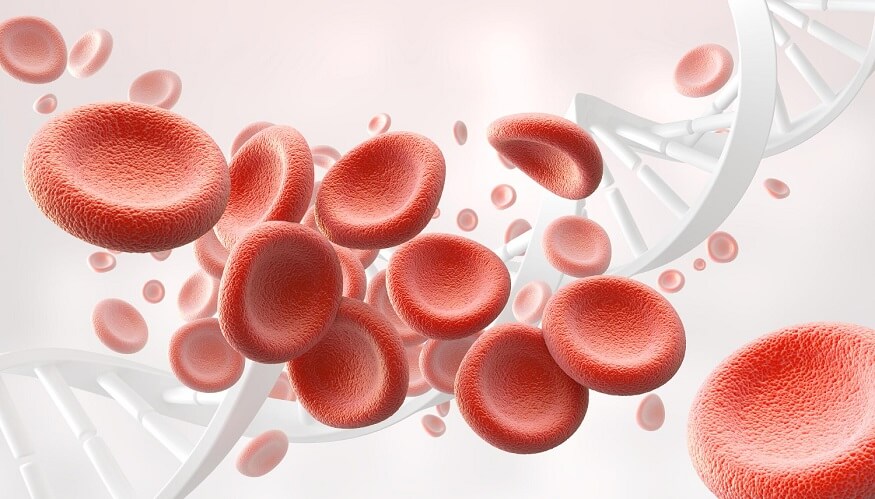According to the World Health Organization (WHO), more than 1.62 billion people all around the world have anaemia. With nearly 47.4% of preschool-age children being anaemic, anaemia has become a global concern.
As per medical science, a child with anaemia does not have enough red blood cells or haemoglobin to carry oxygen to other cells in the body. If left untreated it can have severe consequences. Hence parents need to understand the causes, consequences and dietary solutions for managing this condition in children. In this blog, we will explore the causes of childhood anaemia, its consequences, and dietary solutions.
Also Read: Indigestion in Children: Causes, Symptoms, and Natural Remedies
Causes of Anaemia
Anaemia can be caused by various factors, including:
- Nutritional Deficiencies: Iron deficiency anaemia is a lack of sufficient iron in the diet to make haemoglobin. Children aged between six months to three years are often affected by this form of anaemia. Adolescents, too, are at high risk for iron deficiency anaemia due to the increase in blood volume during rapid growth sprouts and the initiation of menstrual periods in adolescent girls. Parasitic infections like malaria and hookworm, common in tropical regions, can cause anaemia by destroying red blood cells and reducing iron absorption.
- Vitamin-deficiency anaemia: Deficiencies in intake or absorption of vitamin B12 or folic acid, both of which are necessary for red blood cell production.
- Chronic Diseases: Chronic illnesses such as chronic kidney disease, inflammatory disorders, or autoimmune diseases can affect the production of red blood cells.
- Blood Loss: Acute or chronic bleeding from conditions like gastrointestinal bleeding, or injury can lead to anaemia.
- Genetic Factors: Inherited conditions like sickle cell anaemia and thalassemia affect the production and structure of red blood cells.
- Bone Marrow Disorders: Conditions like aplastic anaemia and myelodysplastic syndromes can disrupt the normal production of blood cells.
- Medications and Treatments: Certain medications, like chemotherapy drugs, can suppress bone marrow activity and lead to anaemia.
- Chronic Infections: Infections such as HIV/AIDS can interfere with red blood cell production.
- Lead Poisoning: Exposure to lead through paints or contaminated water, especially in children, can lead to anaemia.
- Diet: Poor dietary choices or restrictive diets can result in nutritional deficiencies contributing to anaemia.
- Premature Birth: Premature infants may have lower iron levels and can develop anaemia if they do not receive adequate iron supplementation.
Also Read: Boost Your Child’s Immune System with Healthy Smoothie Recipes
Consequences of Anaemia
Anaemia in early childhood has serious consequences that extend beyond physical health.
Anaemic children generally display symptoms like chronic fatigue, pale skin, shortness of breath, and dizziness. Weakened immunity, stunted physical growth, and impaired motor development are all common issues that plague anaemic children.
Anaemic toddlers often show delays in their motor skills, such as crawling, walking, and fine motor control. Anaemic children frequently display lower cognitive and academic performance due to challenges in paying attention, language development, memory, and problem-solving.
The behavioural changes often associated with anaemia, such as irritability, can negatively affect a child’s social interactions and relationships. Hence, there is a need for early screening, intervention and education about this severe health issue.
Dietary Solutions to Tackle Anaemia
Various dietary solutions can help to prevent and manage childhood anaemia effectively.
Iron-deficiency anaemia: Feeding children with food rich in iron is important in managing and preventing iron deficiency. Foods like red meat, chicken, eggs, and seafood have a special kind of iron called heme iron, which the body absorbs the most. One can also get non-heme iron from foods like cereals with added iron, beans, peas, lentils, and some fruits and veggies.
However, it is essential to pair these foods with vitamin-C-rich counterparts like citrus fruits, bell peppers, strawberries, or tomatoes, which enhance non-heme iron absorption.
Apart from iron, vitamin B12 and folic acid are other essential dietary components required to combat certain forms of anaemia. A deficiency in either nutrient can lead to an inadequate production of red blood cells. Rich sources of vitamin B12 include fish, meat, poultry, eggs, milk, and fortified breakfast cereals. Legumes (such as peas and lentils), leafy green vegetables, kidney beans, spinach and fortified grain products are great sources of folate.
For those following a vegetarian or vegan diet, it can be challenging to obtain sufficient iron and vitamin B12. In such cases, fortified foods and supplements can help meet the recommended dietary intake. Consulting with a healthcare professional is advisable to ensure appropriate amounts are consumed, especially in children.
Also Read: 10 Common Childhood Illnesses
Addressing anaemia through dietary solutions is not only about what to include in a child’s diet but also what to minimise or avoid. It is best to avoid food rich in phytic acid, such as whole grains and legumes, which impede iron absorption. Highly processed food products with added sugars also compete for the same absorption channels as iron, potentially exacerbating anaemia.
Tea and coffee contain polyphenols that act as strong iron absorption inhibitors. Therefore, these drinks are not advisable for children at risk of anaemia.
While a balanced, nutrient-rich diet can help manage and prevent anaemia to a large extent, it cannot replace professional medical treatment for severe or chronic conditions. Inherent medical conditions causing anaemia may require more specialised treatments which might include medications, blood transfusions, or even surgery.
Regular medical checkups to screen for anaemia and other health issues, particularly in vulnerable age groups, should be mandatory. Childhood anaemia and its root causes are largely preventable, and the issue can be managed effectively via straightforward dietary shifts and regular health checkups. Ensuring children get well-balanced meals, coupled with early regular health screenings, can significantly lower the incidence of anaemia in children.









